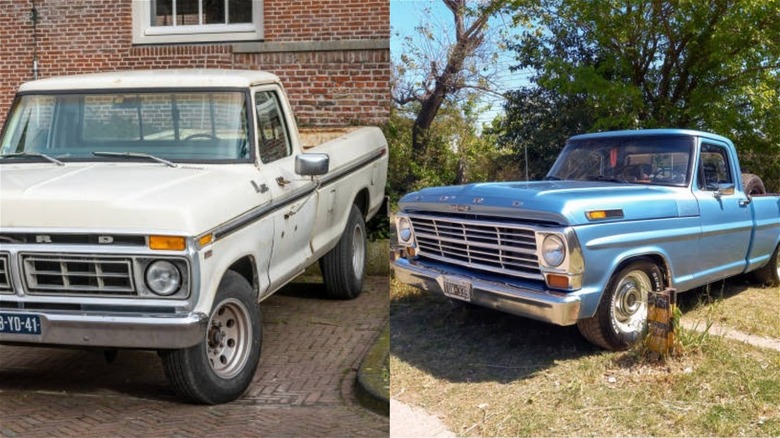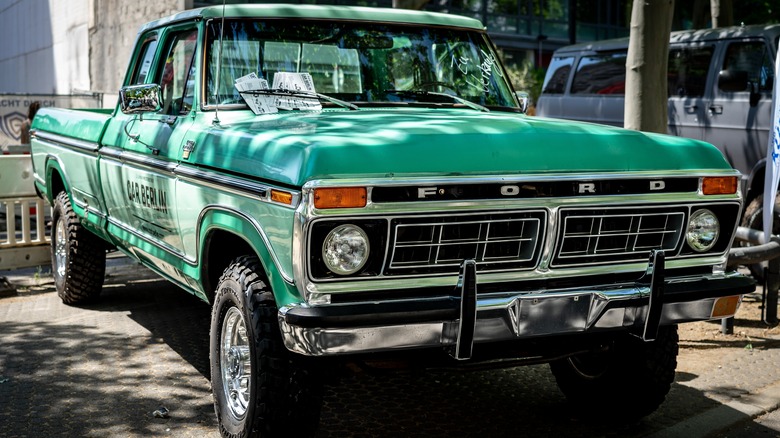What Are Dentside Ford Trucks And How Are They Different From Bumpsides?
In the automotive community, certain series develop nicknames that help differentiate among generations, particularly in a model that has been produced for decades. The Ford F-Series trucks are a great example, with the first iteration launching in 1948 and continuing now in its 14th generation.
So how can you easily describe a fifth-generation F-Series, which ran from 1967 through 1972? Truck fans refer to these Ford's as "bumpsides," due to a narrow line along the side panels popping outward. What do you call a sixth-generation F-Series, from 1973 to 1979? This series is often called a "dentside," because instead of the line that extends from the front to the rear popping out, it's pushed inward. We ranked every generation of Ford's F-Series from worst to best, and surprisingly, both dentside and bumpside landed above some of Ford's more recent creations.
Both the bumpside and dentside F-Series helped to influence trucks' evolution, helping them gain more acceptance beyond agriculture and construction. Of the two, the bumpside is more dramatic, as the body style changes were substantial from the fourth generation of F-Series trucks. In an effort to appeal to more buyers, Ford added sporty elements to its overall design. The automaker's changes were met with decades of success, considering that the F-Series is still around today, and hit a sales record in 2018, moving 909,330 units.
What made dentside Ford trucks special?
It wasn't only the indent along the body that set the dentside apart, but also several new features that propelled Ford's popularity. The dentside generation debuted the Club cab, sometimes referred to as a SuperCab, which is a two-door with an extended cabin. In the mid-1970s, the first F-150 was released and the F-Series took the title of best-selling U.S. truck in 1976. Not only did it sell well, but the first generation of F-150s is considered one of the best-looking Ford trucks ever designed.
Ford's strategy for the sixth-generation F-Series centered around variety. Over the course of the '70s, the automaker would release several versions of its truck in an attempt to reach mass appeal. For those interested in the traditional workhorse aspect of the F-Series, there were choices like the F-350 that included a longer wheelbase and a wider "Styleside" bed with the wheel wells inside the box. For families, the SuperCab model could comfortably ride six. Ford also promoted a number of trim options including the top-tier Lariat, which included several enhancements and more luxurious amenities.
The dentside also offered plenty of options in terms of available engines. During the sixth-generation F-Series run, you could choose anything from a 240-cubic-inch V6 to a 460-cubic-inch V8, with six other variations in between. The automaker's next big evolution in design arrived at the end of the '90s with the first Ford F-Series Super Duty truck.

